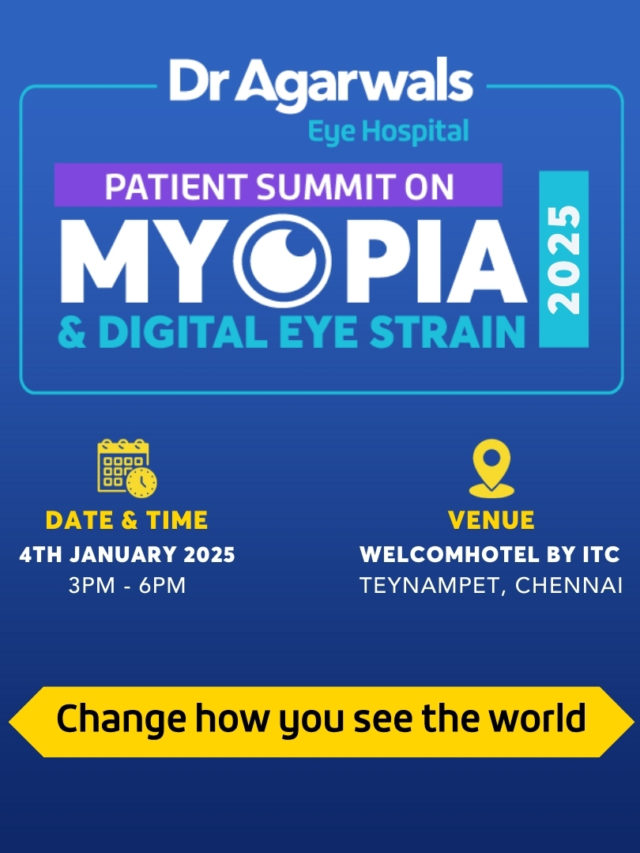Our eyes do more than help us see what is directly in front of us. They also allow us to detect motion and objects from the sides, an ability known as peripheral vision. This visual function is vital for everyday tasks such as driving, walking in crowds, and playing sports.
Good peripheral awareness ensures safety, coordination, and balance. However, when peripheral vision loss occurs, it can significantly affect mobility and independence, often leading to what is commonly called tunnel vision.

What is Peripheral Vision?
To understand, peripheral vision refers to the ability to see objects and movement outside your direct line of sight. While central vision focuses on what’s directly ahead, peripheral vision covers the edges or side fields of view. It helps detect movement, maintain balance, and navigate safely through spaces.
When peripheral vision loss occurs, you may find it difficult to see objects on the sides, a condition often described as tunnel vision. The term tunnel vision refers to a narrowed visual field in which peripheral vision is lost and only central vision remains clear. Maintaining healthy peripheral vision is crucial for overall visual awareness and daily safety.
Causes of Peripheral Vision Loss
Peripheral vision can deteriorate due to several eye or neurological conditions. Identifying the cause helps guide effective treatment and management.
Glaucoma
Glaucoma is one of the leading causes of peripheral vision loss. It damages the optic nerve due to increased eye pressure, leading to a gradual narrowing of the visual field. Without timely treatment, glaucoma can cause permanent vision loss.
Retinitis Pigmentosa
This inherited retinal condition affects light-sensitive cells in the eye. Over time, it reduces night vision and side vision, resulting in tunnel vision. Early diagnosis and visual aids can help manage symptom progression.
Stroke
A stroke affecting the visual pathways in the brain can cause partial peripheral vision loss in one or both eyes. The extent of damage depends on the affected brain area, but rehabilitation may improve visual functioning.
Optic Neuritis
This condition involves inflammation of the optic nerve, often linked to autoimmune diseases like multiple sclerosis. It can cause blurred vision, colour changes, and temporary peripheral vision impairment.
Brain Injuries and Tumours
Traumatic brain injuries or tumours near the visual cortex can disrupt signals between the eye and brain. This may lead to side vision loss or tunnel vision, depending on the affected region.
Symptoms of Peripheral Vision Loss
When peripheral vision starts to deteriorate, the symptoms can vary from mild side-blindness to complete tunnel vision. Recognising these early signs can help prevent accidents and ensure timely intervention.
Difficulty with Navigation
Patients often struggle to move around obstacles, particularly in low-light conditions. They may bump into objects or people because their side vision is reduced. This symptom is typical of peripheral vision loss caused by glaucoma or retinal disorders.
Sensitivity to Light
Some individuals experience glare or difficulty adjusting to bright environments. This occurs when peripheral retinal cells are damaged, reducing the eye’s ability to handle light contrast effectively.
Diagnosing Peripheral Vision Loss
Assessing peripheral vision involves several specialised tests to determine the extent and cause of the loss. Eye doctors use advanced imaging and field tests to accurately map vision function.
Peripheral Vision Test
A peripheral vision test measures how far the eye can detect movement or objects from the sides. The patient looks straight ahead while light flashes appear in different areas, helping detect vision gaps.
Visual Field Test
A visual field test is a key diagnostic tool for detecting tunnel vision and other visual field defects. It helps monitor conditions like glaucoma, strokes, or optic nerve diseases over time.
Treatment Options for Peripheral Vision Loss
Although peripheral vision loss cannot always be reversed, early treatment can prevent further deterioration. The approach depends on the underlying cause.
Medications
For conditions like glaucoma or optic neuritis, medications such as eye drops or corticosteroids help reduce pressure or inflammation, protecting the optic nerve and preventing worsening tunnel vision.
Surgery
In advanced glaucoma cases or structural eye issues, surgical options may be considered. Procedures to lower intraocular pressure or improve drainage can help preserve remaining peripheral vision.
Vision Rehabilitation
Vision therapy and rehabilitation exercises help patients adapt to changes in vision. Techniques may include using contrasting colours, improving lighting, or learning new visual scanning habits to compensate for tunnel vision.
Living with Peripheral Vision Loss
Adjusting to peripheral vision loss can be challenging, but with support and adaptive tools, most patients can lead active, independent lives.
Assistive Devices
Special lenses, magnifiers, and mobility aids help expand remaining visual fields. Some patients benefit from prism lenses that redirect images from the blind area to the seeing part of the retina.
Emotional Support
Vision loss can affect mental well-being. Counselling, vision support groups, and family education play an important role in helping individuals manage anxiety and maintain confidence in daily life.
How to Prevent Peripheral Vision Loss
Preventing peripheral vision loss involves regular eye check-ups, especially for people with diabetes, hypertension, or a family history of glaucoma. Wearing protective eyewear, managing systemic diseases, and maintaining healthy blood pressure also help protect the optic nerve.
Early intervention through screening and prompt treatment remains the most effective way to preserve peripheral vision and prevent tunnel vision.









